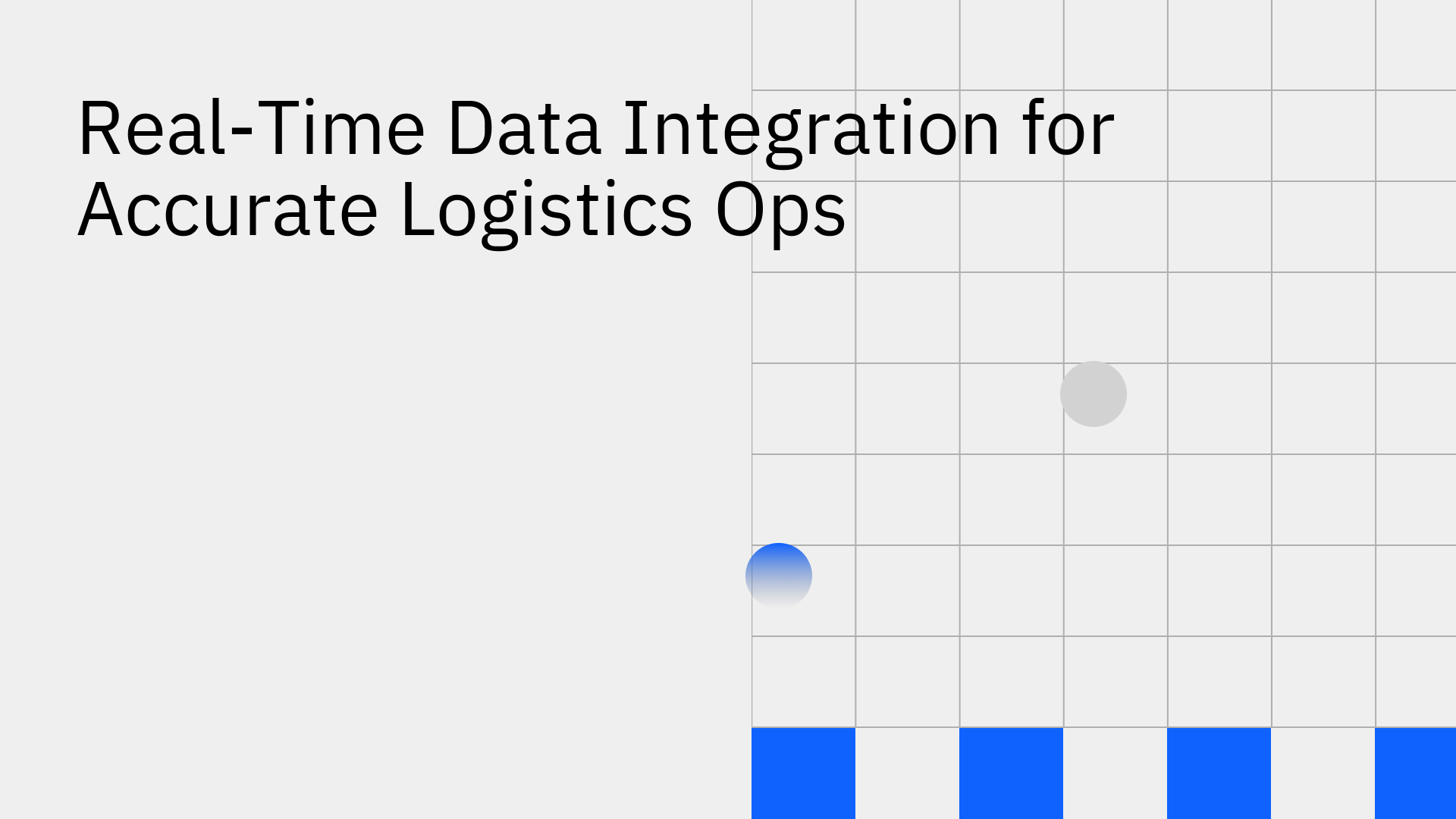
The modern logistics industry is incredibly complex, running on a constant flow of data where speed and accuracy are non-negotiable.
To keep up with customer demands and stay ahead of the competition, logistics companies need their information to be instant and correct.
This is where real-time data integration comes in, it’s the key to connecting all your separate software systems and overcoming common operational hurdles. By unifying your data, you can make your entire operation faster, smarter, and more efficient.
Logistics companies often rely on a variety of specialized software, such as a Transportation Management System (TMS) for shipping, a Warehouse Management System (WMS) for inventory, and an Enterprise Resource Planning (ERP) system for finances.
The problem is, these systems usually don't talk to each other. This creates "data silos," where important information is trapped inside one system and isn't available to others.
This disconnect leads to significant problems:
These issues are not just minor annoyances; they are common data integration pitfalls that create friction and slow your business down. Integrating data from different sources is a well-known challenge across many industries, and logistics is no exception [6].
By connecting your systems in real-time, you can transform your logistics operations from being reactive—fixing problems after they happen, to being proactive and preventing them altogether [2].
Real-time data integration gives you and your customers a single, unified view of a shipment's journey from the moment it leaves the warehouse to its final destination. This level of transparency is essential for building customer trust and satisfaction, as customers now expect immediate and accurate updates on their orders [5].
When customers have access to up-to-the-minute tracking information, it dramatically reduces "where is my order?" (WISMO) calls, freeing up your customer service team to handle more complex issues. Investing in Real-Time Visibility (RTV) delivers clear business value by improving both customer service and operational efficiency [3].
When your sales channels, ERP, and WMS are all in sync, you can finally put an end to stockouts and overstocking. A sale made on your website can instantly update inventory levels in the warehouse, ensuring your team is always working with accurate numbers. This leads to lower carrying costs, frees up cash, and helps your warehouse staff operate more efficiently because they can trust the data on incoming and outgoing stock.
Supply chains are constantly at risk of disruptions from traffic, bad weather, or port congestion. Real-time data allows you to spot these potential delays as they happen, not hours later. This enables managers to make quick decisions, like rerouting a truck or proactively notifying a customer about a delay. Instead of reacting to problems, you can manage them before they impact your bottom line, streamlining your entire supply chain [1].
Stacksync is a platform built specifically to deliver seamless, real-time data integration for the logistics industry. We handle the complex technical work—the "dirty API plumbing"—so your engineering teams can focus on what they do best: building your core business. Our platform makes real-time data sync simple for modern teams, giving you the power of enterprise-grade integration without the complexity.
With Stacksync, you don't need to write a single line of code. Our intuitive interface allows you to set up complex integrations in minutes, not months. While it's easy to use, our platform is built for enterprise-level demands. It can handle millions of records and scale with your business, all without you having to manage any infrastructure. Security is at our core—Stacksync is SOC 2 compliant, meets GDPR standards, and uses secure connection methods like OAuth and SSH tunneling to keep your data safe.
The heart of Stacksync is our real-time, bidirectional synchronization engine. "Bidirectional" means that data flows in both directions. If a record is updated in your WMS, that change is instantly and automatically reflected in your ERP, CRM, and any other connected system. This two-way flow eliminates data inconsistencies and ensures that every team across your organization is working from the same, up-to-the-second information. We provide the powerful technologies that make real-time data sync work at scale.
Stacksync is designed to handle the unique and complex systems used in logistics. Our platform allows you to create a unified data network across your entire tech stack. What logistics systems and platforms does Stacksync support? We provide seamless, real-time data integration for the logistics industry by connecting with a wide array of critical platforms, including:
This broad compatibility means you can connect everything from modern cloud applications to older, on-premise systems into one streamlined operational framework.
To succeed in the years to come, your business needs a data infrastructure that is agile and ready to adapt. As new supply chain trends like automation, the Internet of Things (IoT), and sustainability reporting become standard, having a flexible data foundation will be crucial. The convergence of IoT and Big Data is set to transform the industry, but this potential can only be realized if you have a platform capable of processing massive amounts of data in real-time [8]. Stacksync provides the architecture you need to embrace these innovations and stay competitive.
It's clear that data silos create inefficiency and hold your business back. Real-time data integration is the solution, providing the visibility and agility needed to thrive in today's fast-paced logistics market.
Stacksync offers a powerful, secure, and easy-to-use platform engineered to eliminate data fragmentation and empower your teams with accurate, live information. By automating your data synchronization, you can build a more resilient, efficient, and intelligent supply chain.
Ready to transform your logistics operations? Visit Stacksync to start a free trial or book a demo with one of our cloud architects today.